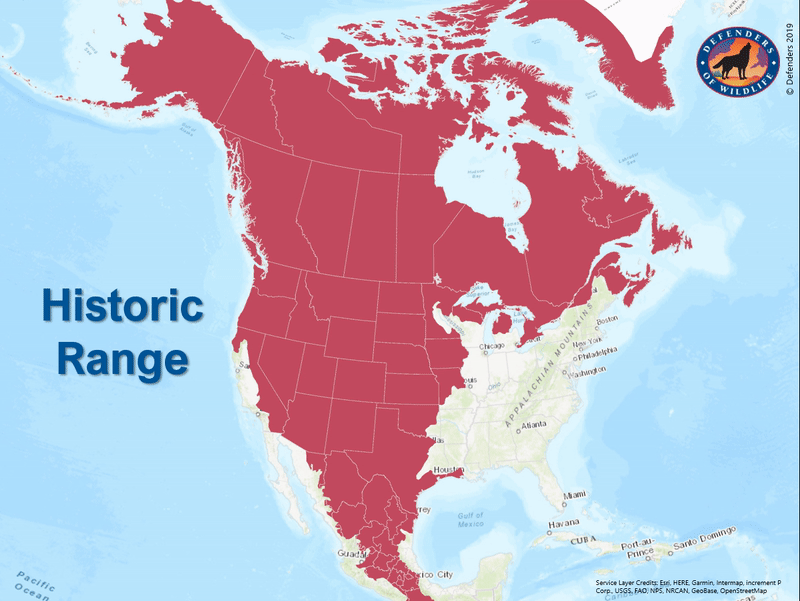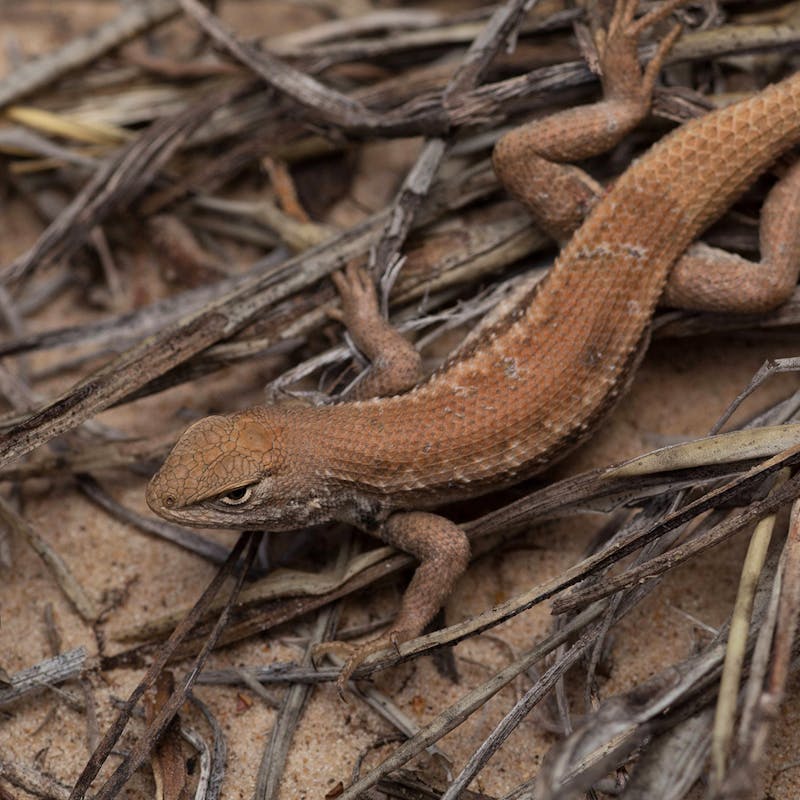At Defenders of Wildlife, one of our main sources of motivation is the success stories in conservation. Success and optimism come from many places: the information we share that positively influences policy, the groups of people we mobilize to support a cause, and the science we share to promote protections for wildlife. Unfortunately, disasters and dour news often have all the focus, with challenges of conservation efforts, extinctions and unknowns dominating news coverage. However, it is important to not only share the plight of threatened and endangered species, but also to promote stories of recovery and show that there is hope for our biodiversity.
As the current GIS (Geographic Information Systems) Intern in the Center for Conservation Innovation, I work with maps created by the U.S. Fish and Wildlife Service (FWS); especially range maps for species listed as threatened or endangered under the Endangered Species Act (ESA). I am currently working on a project to refine our understanding of species ranges and update their maps so that we may advance efforts to protect them. This involves a lot of data collection, literature review, and careful outlining of suitable habitat, known species occurrences, and a variety of other relevant biological factors. There are over 1600 species listed under the ESA in the U.S., and so far we’ve updated range maps like this for about 200 of them. You may have read about this work before in a previous blog post.
Dealing with imperiled species throughout my work day, specifically looking changes in species’ ranges since times of listing, I find myself in search of evidence of species success stories. There truly is hope for the more than 1600 species that are listed as threatened and endangered here in the U.S. We don’t plan for them to stay on that list forever; in fact, the very point of adding a species to that list is to protect and recover it so that one day we will be able to say they have been fully restored to their places in the wild. The ESA is one of the most important tools for conserving species in the United States and its territories. To demonstrate, from 1973 to 2013, the Act prevented extinction for 99% of species listed under it, and over 100 species protected by the Act have recovered by more than 90%. While most of these species will remain under the protection of the ESA for quite some time, numerous species recover every year: five in 2018 and three so far in so far in 2019. The way in which recovery materializes can depend on the species and the criteria set by the FWS, but generally recovery means that a species has grown in numbers and expanded to areas it once inhabited before its decline.
Our most recent example of such a success story is that of the Kirtland’s warbler.
This migratory bird spends its winters mostly in the Bahamas but nests in Michigan. Listed as an endangered species in 1967, the Kirtland’s warbler experienced drastic population declines (of more than 60%) by the early 1970s and reached a low of 167 breeding pairs in the U.S.
Defenders works together with other conservation organizations to protect and uphold the Migratory Bird Treaty Act (MBTA). Because of the ESA and the MBTA, the Kirtland’s warbler has recovered and even surpassed its recovery goal of 1,000-breeding pairs in 2001. Today, there are more than 2,300 pairs of the Kirtland’s warbler, leading it to be officially removed from the FWS’ list of threatened and endangered species earlier this month.
In 2019, the Foskett speckled dace and the Monito gecko both met their respective goals for recovery and have been delisted, and the Colorado butterfly plant will officially be taken off the list in December.
Much like the Kirtland’s warbler, the Monito gecko recovered extensively since listing in 1982 and has been delisted due to recovery this year. The Monito gecko lives in a very small area and is found only on Monito Island (off the coast of Puerto Rico). The lizard faced major threats of habitat destruction and predation by the black rat, an invasive species to its island. Due to black rat eradication projects by the Puerto Rico Department of Natural and Environmental Resources (PRDNER) in 1992 and 1999, and through pressure by organizations such as Defenders of Wildlife for habitat protection, the species greatly recovered. Today, an estimated 5,000 to 11,000 Monito geckos live on the island again. As Defenders and other conservation organizations continue to work to protect wildlife, success stories like these will continue as well.
Our work in the Center for Conservation Innovation combining science, technology, and policy to further conservation and wildlife protection allows us to use maps to measure and visualize the impact of the ESA. It is because of this powerful law that some species’ home ranges on the map are beginning to grow again. Another great example of this is the gray wolf.
The gray wolf’s habitat establishment and expansion represents an ongoing example of the power of conservation programs. While the gray wolf continues to be listed as endangered in the U.S., its range has greatly expanded since its original listing in 1978.
Defenders of Wildlife has been a major advocate for wolf listing and recovery, working with ranchers to develop innovative nonlethal deterrents to minimize conflicts with livestock. In addition, we closely monitor federal and state legislature to figure out threats to the gray wolf, and quickly act to organize our supporters when harmful or dangerous policy changes are proposed.
Conservation stories with successful endings like that of the Kirtland’s warbler, the Foskett speckled dace, the Monito gecko, and the Colorado butterfly plant as well as those that are still ongoing like the gray wolf serve as a reminder that the ESA is an immensely valuable and necessary tool for the protection of our wildlife. Therefore, it is vital to keep the Act functioning. This requires increased funds to support conservation of biodiversity. It also requires that Defenders continue the fight to keep the ESA strong.
Ultimately, these maps of recovery serve as a reminder that conservation is not hopeless, but necessary to keep our ecosystems balanced. I hope my work can contribute to this important work as well, as we continue to update and increase the accuracy of threatened and endangered species’ ranges, especially as they have changed over time.











